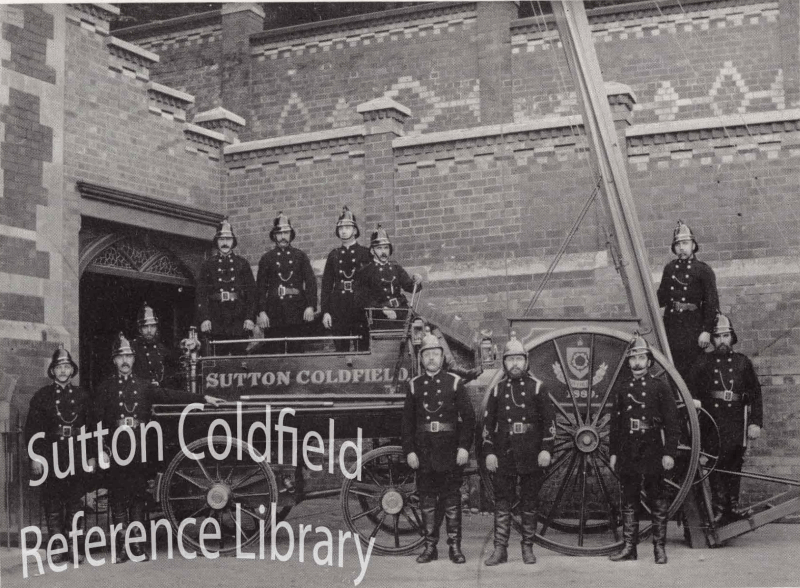The old town of Sutton Coldfield ceased to exist in 1883, and the Borough of Sutton Coldfield was established in its place when the new Charter was received from Queen Victoria in April 1886. The new corporation had more responsibilities than the old one, one of the new duties being to establish a fire brigade.
Alderman Ansell chaired a public meeting on July 27th, and announced that the Borough Council had voted £350 to start a volunteer fire brigade; they could not afford a paid brigade, and the old fire engine was obsolete (it was full of potatoes). The fifty people attending the meeting agreed to set up a fire brigade, and twenty-seven people volunteered to be firemen. On July 30th 1886 the committee chose twelve volunteer and six supernumerary firemen.
The volunteers all lived in the town centre, and were mostly tradesmen - plumbers, carpenters, woodturners, gas-fitters, china dealers - and they elected as their Captain the Station Master of Sutton Town Station in Midland Drive - Charles Browning. Early in June 1887 the brigade held its first drill, and they attended their first house fire later that month (it had already been put out when they got there). They had taken delivery of the new fire engine at the beginning of June (cost £179-5-0) and at the end of the month the new uniforms arrived (cost £28-17-7).
The fire engine was kept in a garage beneath the town hall (now the Masonic Hall) in Mill Street. When the alarm bell was sounded the firemen would come running and get their fire helmets on, but they could not set off until a horse had been harnessed to the fire engine. If you were on The Parade in 1902 when the alarm bell was sounded, you would look not towards Mill Street and the fire station, but towards Queen Street to see the horse being unhitched from the corporation dust cart and led at a trot along the Parade to be harnessed to the engine. (This article based on research by David Chubb)
